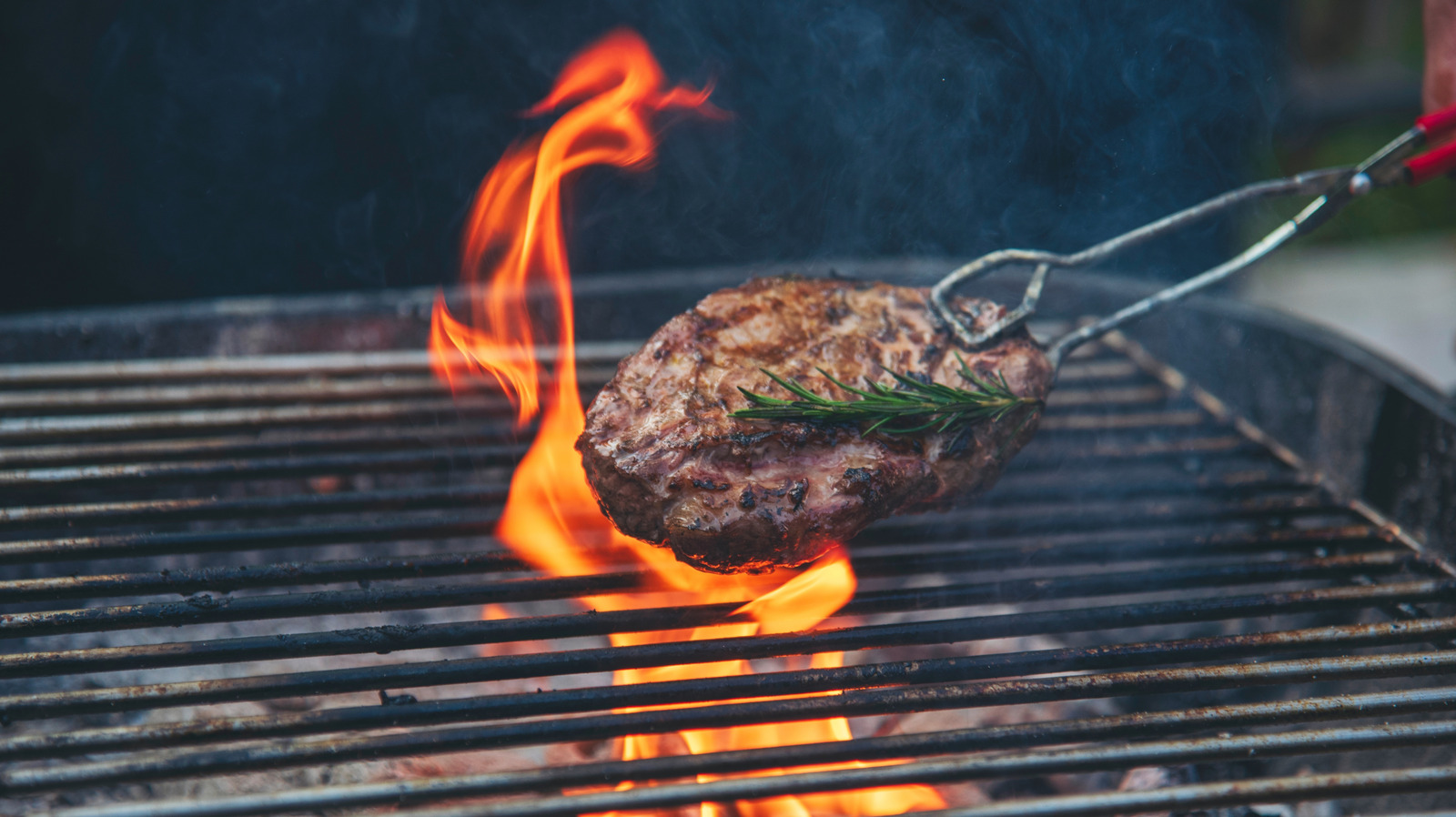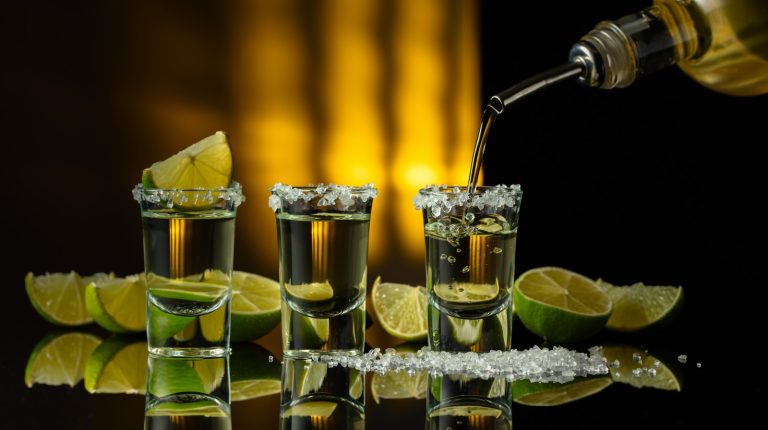Grilling is a great way to bring bold flavors to your food, but not every ingredient belongs over an open flame. While searing a steak or charring corn on the cob may be second nature, tossing just anything onto a hot grate isn’t always the best idea. Certain foods present more problems than they’re worth — and not just in terms of taste. Some fall apart too easily, others dry out or scorch before they’re fully cooked, and a few even present genuine safety concerns. What starts as a fun backyard cookout can quickly become a frustrating mess if you’re not working with ingredients suited for the grill.
Of course, almost any food can be grilled with the right tools, techniques, and level of precision — but that doesn’t mean it should be. If you’re working with delicate textures, high fat content, or foods with uneven shapes or thickness, a different cooking method might serve you better. That doesn’t mean these items are banned from barbecue season altogether. In some cases, a grill basket, foil pouch, or cast iron pan can make the impossible more manageable. But if you’re looking to keep things simple, steer clear of the items on this list — they’re more trouble than they’re worth on the grill.
Leafy greens burn fast
Grilling leafy greens sounds like a clever way to add smoky depth to salads, but in practice, they’re one of the most finicky foods you can toss on the grates. Delicate leaves like spinach or arugula have very little structure, meaning they wilt and blacken almost immediately when exposed to high heat. Even sturdier options like kale or romaine can be tough to manage — their outer leaves crisp up fast, while the inner portions may stay undercooked or unevenly charred.
The core issue lies in their fragility. Without a firm rib or base to anchor them, most greens collapse, shrivel, or fall apart before they can benefit from that signature grilled flavor. And once they hit that point, you’re left with a pile of limp, sometimes bitter leaves that don’t resemble anything you’d want on your plate.
Still, for determined grillers, it’s not impossible. Heartier greens with a strong center — like escarole, cabbage, bok choy, or Swiss chard — stand a better chance, especially when left whole or halved and oiled lightly before grilling. Indirect heat is key here. If you’re working with daintier greens, use a grill basket, perforated pan, or even a metal colander to avoid flare-ups and loss. And above all, don’t walk away — constant attention is the only way to keep leafy greens from going up in smoke.
Soft cheeses turn into a mess
Soft cheeses are a trap for the unsuspecting griller. Brie, Camembert, and triple creams look beautiful on a charcuterie board — not so much when they’re melting straight through grill grates. These cheeses contain high moisture and fat levels, which break down rapidly when exposed to heat. Without a sturdy protein structure to hold them together, they collapse into oily puddles long before they get those sought-after grill marks.
The science behind it comes down to how these cheeses are formed. Softer varieties have weaker protein networks and looser emulsions — the chemical bonds that keep fat and moisture suspended. As the cheese heats up, those bonds snap, releasing fat and water in unpredictable directions. Unlike harder cheeses, which have a more stable structure, soft cheeses simply aren’t built to withstand the open flame.
Still, all is not lost if you’re determined to grill them. The key is containment. Wrapping soft cheese in foil allows it to heat slowly and melt without dripping away. Small cast-iron pans or grill-safe dishes can also help create a fondue-style melt. Just avoid placing them directly on the grates, or you’ll spend more time scraping cheese off your grill than enjoying it.
Delicate fish falls apart
Grilling fish can yield great results, but only if the fish can hold its own against the grates — and many types can’t. Thin, delicate fillets like tilapia, flounder, or cod are especially vulnerable. These fish lack the connective tissue that helps sturdier cuts stay intact, so they often break apart during cooking. Turning them is risky, as flaky portions stick to the grates and crumble when flipped.
Even well-oiled grill grates aren’t always enough to prevent disaster. The high heat of an open flame can dry out lean fish quickly, robbing it of flavor while leaving behind a fragile mess. On top of that, uneven thickness across the fillet means parts will finish cooking long before others, increasing the chance of tearing.
That said, there are ways to make it work. A well-preheated cast iron skillet can provide a safer surface that still imparts smoky flavor. Alternatively, placing the fish on lemon slices or a plank of cedar can protect the flesh while infusing it with subtle flavor. Grilling baskets are another useful tool, allowing you to flip the fish without direct contact with the grates.
Unless you’re experienced or using these workarounds, delicate fish is best kept away from the grill.
Whole eggs are a bad idea
Grilling whole eggs might seem like a fun way to switch up a classic, but it comes with a lot of variables — and not all of them are safe. In theory, tossing eggs in their shells directly onto a grill can work. If handled just right, they cook gently, developing a unique smoky flavor with slightly jammy yolks. But the method leaves no room for error.
If the grill is too hot or the eggs are placed too close to direct flame, the internal pressure can build quickly, causing the shell to crack or burst. Even when they don’t explode, cracks lead to rubbery egg whites and uneven cooking. Eggs also continue to cook after they’re removed from the grill, which can turn a perfect texture into something chalky if not cooled properly.
For better control and safety, skip the shell altogether. Crack your eggs into a well-oiled cast iron skillet or muffin tin and place it on the grill. This gives you all the smoky flavor and visual flair without the unpredictability or cleanup. It’s a safer, smarter way to bring eggs to your cookout menu — especially if you want guests to enjoy them, not dodge them.
Burgers that are too lean dry out
Opting for extra-lean ground beef might seem like the smarter choice for a healthy burger, but it rarely delivers on flavor or texture when cooked on the grill. High heat draws out moisture quickly, and lean blends like 90/10 or 93/7 don’t have enough fat to stay juicy. Instead of a savory, tender patty, you end up with something dry, crumbly, and dense — a burger in name only.
The fat content in your beef plays a crucial role in both flavor and structure. An 80/20 ratio — that’s 80% lean meat and 20% fat — is the sweet spot for grilling. It creates enough moisture and richness to withstand high temperatures, while still forming a solid patty that holds together. Leaner options tend to render what little fat they have too early in the process, especially if the patties are overmixed or warmed before hitting the grill.
If you really need to go lean, you can boost moisture by blending in chopped onions, grated vegetables, or even a small amount of oil or mayo. But to keep things simple and tasty, it’s better to start with a properly fatty blend. A little extra fat goes a long way toward achieving that juicy, caramelized finish that makes grilled burgers irresistible.
Thinly sliced veggies shrivel up
Grilled vegetables are a summer staple, but technique matters — especially when it comes to how you prep your produce. Thin slices of zucchini, carrots, or bell peppers might seem ideal for quick grilling, but their size is actually their downfall. They cook too fast, lose their moisture, and often fall through the grates before they get a chance to develop good flavor or texture.
The problem lies in surface area and thickness. Thin cuts expose more of the vegetable to intense heat, which speeds up cooking in all the wrong ways. Instead of charred edges and a tender bite, you get limp, soggy, or overcooked pieces. And if you slice them too narrow, they’re liable to slip through the grill altogether, particularly with long, narrow vegetables like green beans or asparagus.
There are tips for grilling better vegetables. For starters, slice veggies thicker than you think you should. Grill baskets or perforated trays can also help keep thinner cuts in place while preventing direct flame contact. And most importantly, treat veggies like meat: season well, start on high heat for a sear, then finish low and slow to maintain texture and avoid burning.
Boneless, skinless chicken breasts can overcook fast
Boneless, skinless chicken breasts may be a grill-time go-to, but they’re also one of the easiest cuts to ruin over high heat. With no skin or bone to provide insulation, they’re extremely vulnerable to drying out. The uneven shape of most chicken breasts makes matters worse — the thinner ends cook much faster than the thicker center, often resulting in a meal that’s simultaneously overdone and undercooked.
One of the most common mistakes is grilling them over high, direct heat like you would a steak. Chicken doesn’t benefit from a hard sear in the same way. Instead, the outside chars too quickly, leaving the inside underdone or pushing you to overcook it entirely. To avoid this, a lower, more controlled heat is key.
A few easy techniques can make a big difference. Pounding the meat to a uniform thickness ensures even cooking. Salting the surface or using a basic brine can help lock in moisture, even if the meat stays on the grill a little too long. Starting over indirect heat and finishing quickly over the flame is another way to keep the meat juicy while still getting grill marks.
These fixes help, but they’re not foolproof, which is why chicken breasts still rank high on the list of grilling headaches.
Frozen foods don’t cook evenly
Grilling frozen food may sound like a convenient shortcut, but it often leads to more problems than it solves, especially when it comes to meat and poultry. The intense heat of a grill can brown or even char the outside of frozen items while the inside remains ice cold or undercooked. This uneven cooking isn’t just unappetizing, it can also be unsafe.
According to Oklahoma State University Extension, many frozen products are not pre-cooked, despite appearing grilled or breaded. Visual cues can be misleading, giving the impression that the food is ready to eat when it actually needs thorough cooking. Tossing a frozen chicken breast or burger onto the grill without checking the label and internal temperature could leave harmful bacteria behind.
Even vegetables can suffer from being grilled straight out of the freezer. The water content trapped inside causes them to steam rather than sear, leading to soggy textures instead of crisp, caramelized edges.
If you’re determined to cook frozen food on the grill, make sure to preheat thoroughly, use indirect heat zones, and always rely on a food thermometer to confirm the results. Still, the safer and more effective route is to thaw your ingredients properly beforehand for a more even and flavorful result.
Bacon causes flare-ups
Few foods deliver quite like bacon on the grill — smoky, crisp, and undeniably satisfying. But if you go the direct-on-the-grates route, you might get more fire than flavor. The fat content that makes bacon so irresistible also makes it hazardous in a grilling environment. As the fat renders, it drips down onto the heat source, igniting flare-ups that can singe your food or even cause grease fires.
The risk isn’t just about sudden flames. Thin bacon strips are also prone to slipping through wide grates, and the high heat can scorch them before they cook through. All of this adds up to one of the more high-maintenance meats you can toss on a grill.
Fortunately, there are safer, smarter ways to cook bacon outside. Using a cast iron skillet or a sturdy foil tray placed directly on the grill grates helps contain the fat and prevent flare-ups. Preheat the skillet with the grill, then add the bacon and close the lid — you’ll still get that delicious char and crispness without the stress. Grill baskets or cooling racks over foil-lined sheets are other options that keep things clean and controlled.
Yes, you can grill bacon — but only if you treat it with the caution it deserves.
Store-bought bread dough can collapse
Grilling bread sounds like an easy way to impress, but raw store-bought dough doesn’t always play nice with high heat. The intense, uneven temperature of a grill can char the outside before the inside has a chance to rise or set properly. That leads to loaves that look done on the outside but are gooey, undercooked, or even raw in the middle.
One of the main challenges is controlling grill temperature. Unlike ovens, grills can spike in heat and lack the steady convection flow that bread needs to bake evenly. Store-bought dough, which is often designed for conventional baking environments, isn’t ideal for this kind of variable cooking. Delicate or enriched doughs are especially risky, as they burn quickly and struggle to develop a stable structure on open grates.
That said, there are ways to make it work. Flatbreads like naan or pizza dough are more forgiving and can be grilled directly with careful attention. Using a pizza stone or heavy-duty pan helps regulate the temperature and reduces the risk of burning. Starting with smaller portions — like rolls or mini loaves — also increases the chance of success. For best results, keep the lid closed to trap heat, and always monitor both the top and bottom of your dough to ensure even baking.
Cream-based marinades scorch quickly
Marinades made with sour cream, yogurt, or other dairy bases can be excellent for tenderizing meat, but they’re tricky business on the grill. These creamy mixtures contain natural acids, like vinegar or citrus, that help break down muscle fibers, making proteins like chicken and fish more tender. However, the same ingredients that work wonders during marination can cause serious issues when exposed to direct flame.
The biggest challenge is that dairy burns fast. Once placed over high heat, cream-based marinades begin to darken and crisp, often well before the interior of the meat is properly cooked. This can leave the outside overly browned or even bitter, especially if the marinade includes ingredients like mustard or sugar, which also caramelize quickly.
Grilling with this kind of marinade isn’t impossible, but it requires a few precautions. First, shake off excess marinade before placing your protein on the grill to minimize flare-ups and scorching. Second, opt for indirect heat, allowing the meat to cook more slowly without immediately blackening the surface. Using a grill-safe pan or foil packet can also help manage the mess while locking in moisture.
When used thoughtfully, dairy-based marinades can still enhance flavor. Just keep the flame in check — and the fire extinguisher close.
Shell-on shrimp can be tough to peel
Grilling shrimp in their shells seems like a smart move — the shells lock in moisture and add a touch of flavor. But while the results can be juicy and flavorful, they often come with a major downside: peeling them can be a nightmare. On a hot grill, it’s easy to overcook shrimp while trying to get that perfect char, and once that happens, the shell can cling tightly to the meat.
According to longtime cooks on eGullet’s culinary forums, the issue of hard-to-peel shrimp isn’t just about cooking time. A number of variables come into play, including how recently the shrimp molted and whether they were previously frozen. While grilling might add delicious smoky notes, it also tends to dry out the exterior and tighten the shell’s grip on the flesh, especially if you leave them on the heat too long.
To get the best of both worlds — flavor and ease — it’s worth peeling the shrimp in advance and skewering them for the grill. If you really want to keep the shells on, consider marinating them briefly and grilling quickly over medium heat until they’re opaque. Either way, don’t let a battle with shrimp shells ruin an otherwise great dish.





